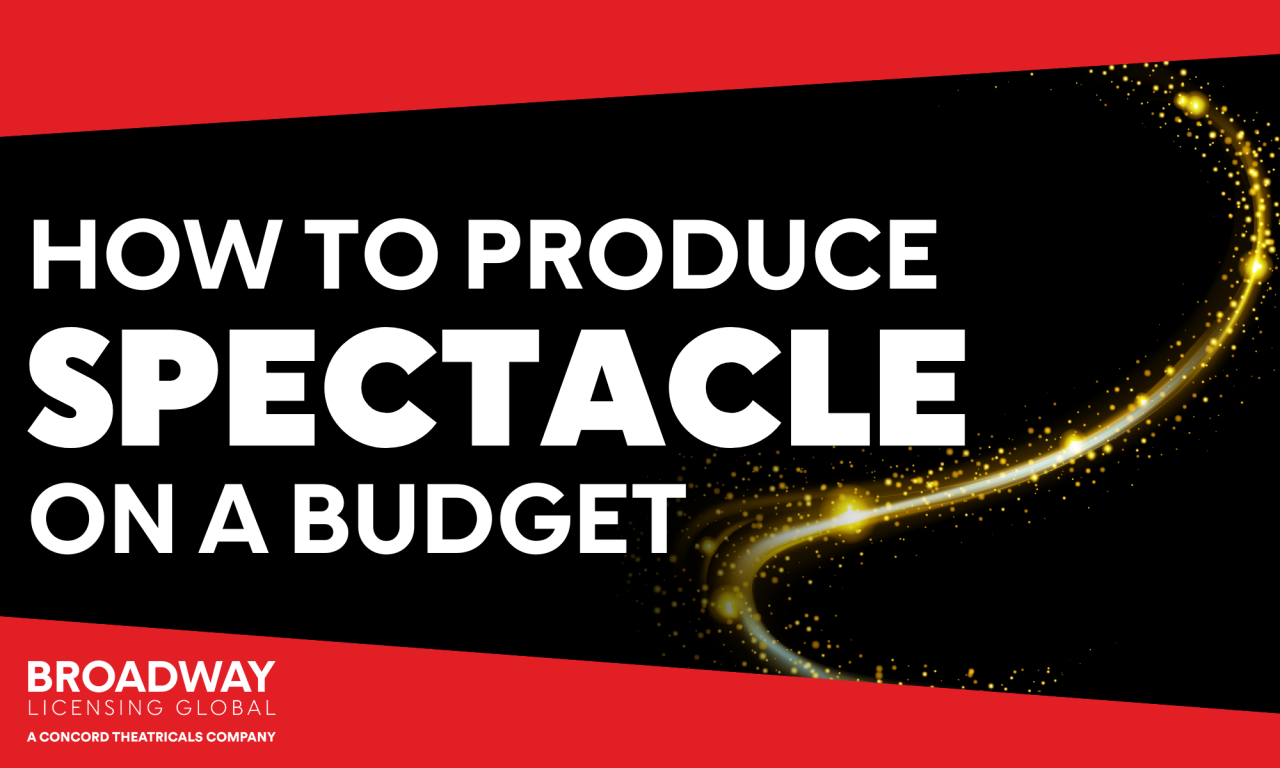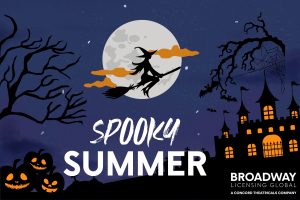It’s no secret that blockbuster plays that have enjoyed Broadway and West End runs are designed to dazzle, but for schools and community theatres, creating that same sense of wonder without a Broadway budget might feel like an impossible task. The good news: You don’t need a huge budget to create something truly magical. With smart choices, a little ingenuity, and a focus on storytelling, you can produce a show that stuns audiences and brings your students’ talents to life. Learn how below with some help from real theatre educators and producers.
Start With Story, Not Stagecraft
While audiences may be drawn in by magical duels or elephants under the big top, it’s the emotional heart of these stories that really makes them land. As Water for Elephants book writer Rick Elice explains, the creative team spent years dreaming about how to tell this story without depending on massive set pieces or flashy effects. “Before we arrived at the maximalist circus spectacle that we staged and are very proud of on Broadway,” he said, “we spent five years talking about the lo-fi version of this show. The thing that brought us together was that shared love of resourceful storytelling.” Speaking to licensees of the show, Elice said, “It’s not how much you spend (our puppet for Queenie the dog is not much more than a bath-mat), or how much you show, but how much you trust the audience to imagine what you don’t show.” He continued, “In the theatre, you don’t need an actual elephant. All you need is a great story and compelling characters, and the most important part of any theatrical equation: the audience’s imagination.”
That same spirit can guide your own production choices. Derek Kinnear, who directed Harry Potter and the Cursed Child (High School Edition) at Hoboken High School, encourages directors to stay grounded in the fundamentals: “What do you need to tell this story, and what do you want to tell this story? Tackle your needs first.” For Kinnear, it was never about recreating the Broadway illusions—it was about connection. “At the end of the day it is a very human story,” he said. “This is a story about friendship, and this is a story about parents and kids.”
Make the Magic Yourself
Resourceful storytelling often means embracing a DIY approach—and trusting in your team’s ingenuity. At Riverside School, Program Director Kennedy Bloomer said they knew right away they’d need to get hands-on: “We wanted to make it affordable and still do the show justice. So we had to think, how can we make this look as good maybe doing some stuff ourselves.”
That attitude led to bold, creative solutions. At Hoboken High School, teacher Isabelle Zurcher shared, “We thrifted a lot and found stuff on clearance. All of our props were 2D and cut out of lauan plywood that we painted.” The result wasn’t just budget-friendly—it was imaginative, personalized, and visually striking.
Water for Elephants is full of scenes that might seem technically daunting at first—like a train racing across the country. But even the Broadway production didn’t use an actual train car. “We had all of these ideas,” said Elice, “and none of them were to put an actual train car on stage.” Instead, they found theatrical ways to imply motion, emotion, and momentum with lighting effects and old-fashioned theatre tricks.
Budget for What You Can’t Predict
Even with careful planning, shows often reveal hidden needs once rehearsals begin. At Hoboken High School, Program Director Danielle Miller says their solution is to be flexible and proactive. “We always do additional fundraising for additional items that we wind up realizing we need as we get scripts,” she explained. “So we use our fundraising money to purchase those additional items that weren’t pre-planned and already placed within our budget.”
That might mean sourcing extra materials for a set change, adding costumes for a newly blocked scene, or building a last-minute prop a student thought up on the fly. Fundraisers that tie into the theme of your show—a circus-themed event for Water for Elephants or a magical market for Cursed Child—can not only raise money, but draw your audience into the world of the play before opening night even arrives.
Empower Students as Creators
One of the most overlooked sources of creativity in school theatre is the students themselves. Bloomer emphasized just how eager students were to help: “I think teachers and directors might be surprised how many kids you get that actually want to be involved. We had so many students—one in particular—who designed so many of the props.”
When students take ownership of design, tech, or construction, they bring their own passion and perspectives. Kinnear said giving students that chance “injects their creativity” into the show in a way no outside vendor could replicate. From hand-painted signage to intricate puppets and clever scenic elements, empowering students to create their own spectacle can be just as impressive as anything Broadway builds.
Build a World, Not Just a Set
Spectacle doesn’t need to wait until the curtain rises. You can start building the theatrical world as soon as the audience enters the space. At Riverside School, Bloomer described how they turned their entire theatre into part of the magical universe: “We kind of went for a Great Hall vibe for the whole of the audience and the set. So, as they came in, there were some fake candles and that kind of set the scene for the whole play.”
This immersive approach creates immediate buy-in and allows simple touches—lighting, sound, texture—to do the heavy lifting. A few well-placed props and a shift in atmosphere can completely transport your audience, no high-end gear required.
Lights and Storytelling Go Hand in Hand
Lighting doesn’t have to be complex to be impactful. Focus on clarity, mood, and storytelling. A splash of color, a shadowy silhouette, or a tight spotlight can shift the energy of a scene without the need for expensive rigs. And often, the limitations lead to more inspired solutions.
The creative team behind Water for Elephants didn’t recreate a three-ring circus on stage. They focused on what could be conveyed through motion, rhythm, and imaginative design. Schools can do the same—using light and sound to suggest grandeur instead of buying it.
Trust your students. Trust your creativity. Trust the story. Because some of the most breathtaking moments in theatre are the ones you build with a bit of plywood, a lot of passion, and the shared belief that anything is possible. Spectacle is about making your audience feel something bigger than reality. That doesn’t require budget-breaking illusions or Broadway-grade tech—it requires heart, creativity, and a team willing to dream big and work smart.





